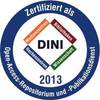Preview |
PDF, English
- main document
Download (7MB) | Terms of use |
Abstract
Understanding neutrino properties remains a key open question in particle physics. This thesis explores how cosmology and astrophysics constrain or support a possible Dirac nature of neutrinos and probe neutrino interactions with dark matter (DM). Explaining a Dirac mass for neutrinos requires new fields and symmetries. These lead to an experimentally constrained excess in $\Delta N_\text{eff}$ from production of right-handed neutrinos in the early Universe. We develop a Monte Carlo-based scheme for integrated Boltzmann equations and apply it to Dirac neutrino models. First, we study ${Z^\prime}$ extensions, finding them subject to strong and generic constraints from $\Delta N_\text{eff}$ that are only avoided if the thermal history of the Universe was non-standard or it reheated to $T_\mathrm{reh}\ll m_{Z^\prime}$. We also introduce a Dirac-Type-I seesaw family as a unified framework of Dirac seesaws and a generalization of the Majorana Type-I seesaw family. We study two minimal UV completions with a spontaneously broken global symmetry yielding the Diracon as a Nambu-Goldstone boson. The production of light degrees of freedom is suppressed compared to gauged models, which leads to weaker bounds from $\dneff$ in direct comparison. Astrophysical and laboratory-based flavor observables involving the Diracon and complementary to $\dneff$ are identified. Minimal Dirac models with a global symmetry appear as a viable alternative to a gauge symmetry, due to the strong and generic constraints we find on the latter. In a separate study, we turn to astrophysical tests of neutrino-DM interactions. We investigate the upscattering of MeV-scale DM by the diffuse supernova neutrino background (DSNB), focusing on model dependence and improved flux attenuation modeling. The strength of neutrino-DM interactions preferred by cosmological data is below current experimental sensitivities. We discuss the role of DSNB upscattering in probing such interactions and its wider implications for DM direct detection. Unlike cosmological tests, upscattering offers a direct experimental window into neutrino-DM interactions.
| Document type: | Dissertation |
|---|---|
| Supervisor: | Lindner, Prof. Dr. Dr. h.c. Manfred |
| Place of Publication: | Heidelberg |
| Date of thesis defense: | 28 October 2025 |
| Date Deposited: | 06 Nov 2025 13:06 |
| Date: | 2025 |
| Faculties / Institutes: | The Faculty of Physics and Astronomy > Institute for Theoretical Physics Service facilities > Max-Planck-Institute allgemein > MPI for Nuclear Physics |
| DDC-classification: | 530 Physics |
| Controlled Keywords: | Physik, Kosmologie, Neutrino |









